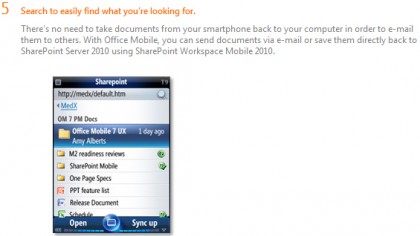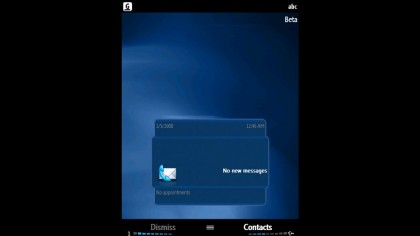Terry Myerson: what you need to know about the new head of Windows
Bringing experience to the Windows party

Soon Andy Lees moved on to handle the Barnes and Noble negotiations for Steve Ballmer and Terry Myerson took over Windows Phone completely.
He quickly showed he's not afraid to criticise the competition, claiming for example that Android is buggy and fragmented, and that Apple only releases iOS upgrades to make you buy a new phone. "Statistically speaking, no Android phones get upgraded, none, ever," he said at Mobile World Congress 2012.
"They have big bugs, they don't even get patched. That's what we're seeing statistically out there. In the case of Apple, they've shipped OS updates to hardware that makes it unusable. It's a great hardware sales tool as far as I can tell. Install this OS which makes your hardware unusably slow, so then you feel compelled to go back to the store and buy a new piece of hardware."
Early Microsoft career
So what had Myerson done at Microsoft before to qualify as "major talent"? He joined Microsoft in 1997 when it acquired the web analytics company he founded, Interse. That became Microsoft Site Server and then Microsoft Commerce Server, which integrated with SQL Server, SharePoint and Microsoft's business integration tool BizTalk, which Myerson led the development team for. These were significant products that gave Microsoft credible business tools for competing with enterprise players such as SAP.
In 2001 he took over Exchange, and he went from general manager to corporate vice president as the Exchange team delivered two of its most significant releases, Exchange 2003 and Exchange 2007.
They made Microsoft the leader in business email - and they included significant mobile features, from being able to get your email through a web browser to searching the mail server from your phone to remotely wiping lost phones with Exchange 2007.

Perhaps the biggest was Exchange Active Sync, a protocol that Microsoft licensed to Sony, Palm, Nokia, Symbian and Motorola for syncing email, contacts and calendars from Exchange - and the increasing number of webmail services using AS - onto their phones.
Sign up to the TechRadar Pro newsletter to get all the top news, opinion, features and guidance your business needs to succeed!
One of Myerson's last achievements on the Exchange team was his two-week negotiation with Apple's Phil Schiller to have the iPhone support EAS.
But Myerson also oversaw the introduction of technologies in Exchange that are significant in Windows now, such as PowerShell; Exchange was the first Microsoft product to enable you to control it with the powerful scripting system that was then called Monad.
And he led the development of Windows Management Instrumentation (WMI). This is Microsoft's implementation of open standards for managing and monitoring an operating system, and it's at the heart of the automation that underlies Microsoft's cloud technologies, including Azure.
Windows beyond phones
Terry Myerson isn't just responsible for Windows Phone - which has been widely praised, even though sales have been slow to take off. He's also been involved with a broad range of Microsoft technologies that have gone on to be crucial for the company, and with integrating them into other products, which bodes well for managing a core operating system that runs the range of different Microsoft devices and services.
If Terry Myerson can repeat the success of Exchange with Windows 8.1, Windows Phone and Xbox, Microsoft will be sitting pretty.
But he's going to be facing OEMs who are disappointed by the sales of Windows 8, making them just as unhappy as the phone OEMs he had to deal with when he cancelled Photon - and unless you count the innovative but not big-selling Surface team, there's no obvious equivalent of Nokia ready to throw significant hardware research and development behind new Windows devices.
But when you think about his background, it's obvious why Steve Ballmer thought he was the best choice for the Microsoft OS, even if Steve Ballmer himself is now to leave Microsoft - check out Ballmer leaves Microsoft. But in what shape?
Mary (Twitter, Google+, website) started her career at Future Publishing, saw the AOL meltdown first hand the first time around when she ran the AOL UK computing channel, and she's been a freelance tech writer for over a decade. She's used every version of Windows and Office released, and every smartphone too, but she's still looking for the perfect tablet. Yes, she really does have USB earrings.